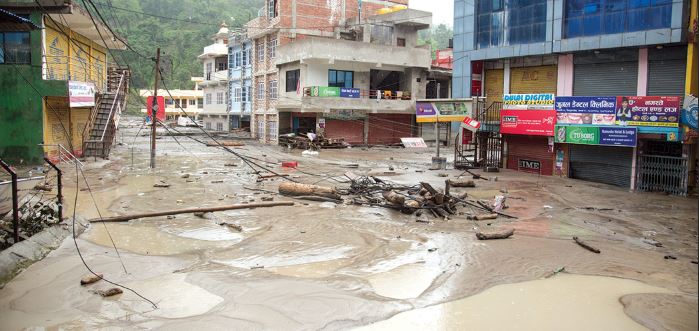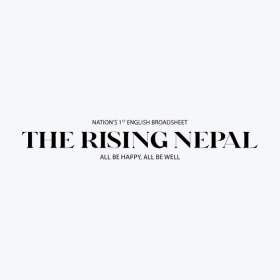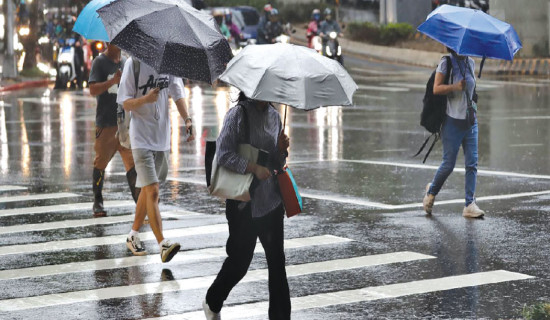- Thursday, 11 December 2025
Above normal rains call for better preparedness
Kathmandu, May 26: As the country swelters in the rising temperature, everyone is waiting for the monsoon season to start soon. The monsoon season usually starts on June 13 in Nepal. With the rise in temperature, rainfall is also becoming erratic in the country. Experts said temperature has been rising more in mountainous countries than in other countries. That has been wreaking havoc in the country over the past few decades.
Extreme rainfall in the third week of October last year, about a month after the monsoon ended, damaged ripe paddy crops worth billions of rupees.
Likewise, heavy rainfall in Sindhupalchowk district caused extensive flooding and landslides in June 2021, in less than a week after the start of the monsoon caused losses in millions and displaced more than 100 families.
This year, it is estimated that some 1.7 million people will be affected by the monsoon. The monsoon is entering Nepal on and around June 13. The Department of Hydrology and Meteorology (DHM) has already predicted above-average rainfall during the four-month monsoon season from June 1 to September 30.
The northern part of Province 1, most parts of Madhesh Province and the southern parts of Bagmati Province are predicted to have 35 per cent to 45 per cent chance of average rainfall, with the rest predicted to have 35 per cent to 65 per cent chance of above-average rainfall.
Pratibha Tuladhar, a senior meteorologist at Meteorological Forecast Division under the DHM, said that above-average rainfall has been predicted in various parts of the country including the Chure range this year. “The pattern of the amount of rainfall has changed in the last 20 years. There has been a trend of heavy rainfall during a short period, causing flash floods,” Tuladhar said.
According to Dr. Binod Pokharel, Associate Professor of the Central Department of Hydrology and Meteorology at the Tribhuwan University, the sub-seasonal forecasting models showed that there will be chances of 20 to 30 per cent above-average rainfall in the west this season, but they might not be 100 per cent accurate.
Mostly high-intensity rainfall is recorded in July which may lead to flash floods, he added. Almost 80 per cent of the total annual rainfall occurs during the monsoon and the monsoon water is crucial for agricultural production. On the other hand, the high-intensity rainfall can cause floods and landslides which affects the socio-economic sectors of the country.
The average rainfall is calculated based on the data of 30 to 40 years of the concerned area. If there is more than 110 per cent rainfall in the area, it is considered above-average rainfall. So far, 1500 mm rainfall in the year-round is considered average rainfall in Nepal but the pattern of rainfall varies from place to place, Dr. Pokharel said.
As the monsoon is nearing and already predicted for potentially disastrous above-average rainfall, the National Disaster Risk Reduction and Management Authority (NDRRMA) is working on a plan for this year. “We have been collecting plans from every concerned ministry, other concerned government and non-government organisations, local bodies and province governments for the disaster preparedness plan for this year,” said Hari Prasad Ghimire, Joint Secretary at NDRRMA. Every plan received from all the concerned bodies will be compiled and the programme will be implemented as per the need. “We are implementing programmes this year by learning the lessons from the past,” he said.
There were many weaknesses in the rescue and response process, but we are not only responsible. All the concerned organisations should join hands during the disaster, Ghimire said.

















